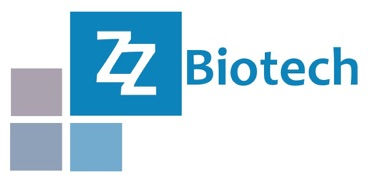预约演示
更新于:2025-05-07
protein C
更新于:2025-05-07
基本信息
别名 Activation peptide、Anticoagulant protein C、Autoprothrombin IIA + [10] |
关联
12
项与 protein C 相关的药物作用机制 protein C刺激剂 |
最高研发阶段批准上市 |
首次获批国家/地区 日本 |
首次获批日期2008-01-25 |
作用机制 protein C刺激剂 |
原研机构 |
非在研适应症- |
最高研发阶段批准上市 |
首次获批国家/地区 欧盟 [+3] |
首次获批日期2001-07-16 |
作用机制 protein C刺激剂 |
在研机构 |
原研机构 |
非在研适应症- |
最高研发阶段批准上市 |
首次获批国家/地区 日本 |
首次获批日期2000-09-22 |
38
项与 protein C 相关的临床试验NCT06381661
PALETTE- Adaptive Platform Trial for Personnalisation of Sepsis Treatment in Children and Adults: a Multi-national, Treatable Traits-guided, Adaptive, Bayesian Basket Trial"
PALETTE is a perpetual adaptive platform to efficiently study sepsis interventions within 'treatable traits' in all-ages patients enabling prompt evaluation of pandemic treatments. Treatable traits, therapeutic targets identified by phenotypes or endotypes (defined by biological mechanism or by treatment response) through validated biomarkers (measurable characteristic reflecting normal or pathogenic processes, or treatment responses), may include multi-omics, cellular, immune, metabolic, endocrine features, or intelligent algorithms. PALETTE Bayesian adaptive design enables parallel investigations of multiple interventions for sepsis, and quick inclusion of pandemic pathogens. PALETTE's new conceptual model will respond to the challenges of standard approaches, i.e. series of sepsis trials, each investigating one or two interventions, expensive, time consuming, and inappropriate in pandemic context.
开始日期2026-04-01 |
NCT05484154
A Phase 3 Study to Evaluate the Efficacy and Safety of 3K3A-APC in Combination with Tissue Plasminogen Activator, Mechanical Thrombectomy, or Both in Subjects with Moderate to Severe Acute Ischemic Stroke
The purpose of this study is to evaluate the efficacy and safety of intravenous doses of 3K3A-APC, a recombinant variant of human activated protein C (APC), in the treatment of acute ischemic stroke following treatment with thrombolysis, mechanical thrombectomy or both.
开始日期2024-10-01 |
申办/合作机构  ZZ Biotech LLC ZZ Biotech LLC [+4] |
NCT06590974
Special Drug Use Surveillance Study of Ceprotin for Intravenous Injection 1000IU (All-Case Surveillance)
This study is conducted in Japan of Freeze-dried Human Protein C Concentrate (TAK-662) used to treat participants with congenital protein C deficiency.
The main aim of the study is to evaluate for adverse events and effectiveness of congenital protein C deficiency (TAK-662).
During the study, participants with congenital protein C deficiency will be administered with TAK-662 intravenous injection in under routine normal practice. The investigators will evaluate adverse events due to TAK-662 for 12 months. For participants who will be administered in long-term supplementation of TAK-662 after acute treatment or short-term supplementation, the investigator will evaluate for 24 months as a maximum. The study sponsor will not be involved in how the participants are administered but will be recorded what happens during the study.
The main aim of the study is to evaluate for adverse events and effectiveness of congenital protein C deficiency (TAK-662).
During the study, participants with congenital protein C deficiency will be administered with TAK-662 intravenous injection in under routine normal practice. The investigators will evaluate adverse events due to TAK-662 for 12 months. For participants who will be administered in long-term supplementation of TAK-662 after acute treatment or short-term supplementation, the investigator will evaluate for 24 months as a maximum. The study sponsor will not be involved in how the participants are administered but will be recorded what happens during the study.
开始日期2024-09-06 |
100 项与 protein C 相关的临床结果
登录后查看更多信息
100 项与 protein C 相关的转化医学
登录后查看更多信息
0 项与 protein C 相关的专利(医药)
登录后查看更多信息
9,889
项与 protein C 相关的文献(医药)2025-12-31·Libyan Journal of Medicine
Investigating the predictive role of serum amyloid A and its association with immunological and coagulation biomarkers in recurrent pregnancy loss
Article
作者: Albarakati, Rayan G. ; Moemen, Dalia ; Ikram, Abida ; Abdel-Razik, Mahmoud Mohamed ; Elsherbini, Dalia Mahmoud Abdelmonem ; Eldars, Waleed ; Bushaqer, Nayla Jamal ; Ommen, Rebecamma ; Elshamy, Maged Ragheb ; Reshi, Saima ; El-Sherbiny, Mohamed ; Barakat, Ghada ; Arif, Spogmai ; Elhefnawy, Ismail A. ; Thabet, Mahmoud ; Ragab, Ahmed ; Hassan, Sara Izzeldin ; Kar, Baisakhi ; Hasan, Kawkab Ali ; Bahgat, Nagwan Ahmed
2025-12-31·Gynecological Endocrinology
Effect over coagulation and fibrinolysis parameters of a prolonged release 24 + 4 daily use regime contraceptive formulation containing 2 mg dienogest/0.02 mg ethinylestradiol
Article
作者: Angulo, Alicyoy ; Colli, Enrico ; Regidor, Pedro-Antonio
2025-05-01·Biochimie
Interaction and cleavage of cell and plasma proteins by the platelet-aggregating serine protease PA-BJ of Bothrops jararaca venom
Article
作者: Morone, Mariana S L C ; Cajado-Carvalho, Daniela ; Serrano, Solange M T ; da Rós, Nancy
92
项与 protein C 相关的新闻(医药)2025-05-02
·翰森制药
2025年5月1日,翰森制药集团有限公司(以下简称“翰森制药”,03692.HK)宣布,公司自主研发的B4-H4靶向抗体-药物偶联物(ADC)注射用HS-20089获国家药品监督管理局(NMPA)批准纳入“突破性治疗药物”,拟定适应症为用于治疗铂耐药复发上皮性卵巢癌、输卵管癌或原发性腹膜癌患者。本次认定主要依据HS-20089-101研究的I期试验结果和HS-20089-201研究的Ⅱ期试验结果。HS-20089-101研究是一项多中心、开放标签的I期临床试验,评价注射用HS-20089在晚期实体瘤患者中的安全性、耐受性、药代动力学和有效性。HS-20089-201研究是一项多中心、开放标签的Ⅱ期临床试验,在复发性或转移性卵巢癌和子宫内膜癌患者中评价HS-20089静脉注射给药的有效性、安全性、药代动力学特征和免疫原性。HS-20089是一款B7-H4靶向ADC,其有效载荷为拓扑异构酶抑制剂(TOPOi),正于中国开展用于治疗卵巢癌以及其他妇科肿瘤的多项临床研究,其中最高研究阶段为临床Ⅲ期。2023年10月20日,翰森制药与GSK订立独家许可协议,授予GSK全球独占许可(不含中国内地、香港、澳门及台湾),以开发、生产及商业化HS-20089(GSK5733584),该产品目前正由GSK开展海外Ⅰ期临床试验。翰森制药现已布局多个进展靠前、具有差异化的ADC分子,并高效推进其临床开发及注册申请,以期早日为中国乃至全球患者带来更多突破性治疗选择。关于卵巢癌卵巢癌(OC)是最常见的妇科恶性肿瘤之一,2022年,全球约诊断出324,603例卵巢癌新病例,使其成为女性中第八大常见恶性肿瘤。该年约有206,956例卵巢癌死亡,卵巢癌成为女性癌症相关死亡的第八大原因。在中国,2022年卵巢癌的发病数为61,060例,死亡人数为32,646例[1] 。手术联合以铂为基础的化疗是目前卵巢癌的标准治疗方式,但绝大部分晚期患者会在3年内复发,并最终会对铂类化疗产生耐药性,铂耐药复发卵巢癌(PROC)的临床治疗手段和疗效均十分有限。根据近年来开展的Ⅲ期随机对照研究中的对照组(非铂单药化疗)数据显示,非铂单药化疗卵巢癌的客观缓解率(ORR)仅4%~15.9%,中位无进展生存期(mPFS)仅3.4~3.98个月。对于接受过1至2线治疗的患者,非铂化疗结合贝伐珠单抗的ORR为27.3%,mPFS延长至6.7个月,中位生存期(mOS)达到16.6个月。尽管PFS显著延长,但OS与非铂化疗相比无明显获益[2-6] 。目前该疾病仍存在巨大未被满足的临床需求,亟待寻找更为有效的治疗方式。关于突破性治疗药物根据《国家药品监督管理局关于发布突破性治疗药物审评工作程序(试行)等三个文件的公告》(2020年第82号),突破性治疗药物程序适用范围为——药物临床试验期间,用于防治严重危及生命或者严重影响生存质量的疾病,且尚无有效防治手段或者与现有治疗手段相比有足够证据表明具有明显临床优势的创新药等。针对纳入突破性治疗药物程序的药物,CDE优先配置资源进行沟通交流,加强指导并促进药物研发;并且经评估符合相关条件的,也可以在申请药品上市许可时提出附条件批准申请和优先审评审批申请。关于翰森制药翰森制药是中国领先的创新驱动型制药企业,以「持续创新,提高人类生命质量」为使命,重点关注抗肿瘤、抗感染、中枢神经系统、代谢及自身免疫等重大疾病治疗领域。截至目前,公司已上市7款创新药,形成了丰富的产品管线。翰森制药连续多年位居全球制药企业百强、中国医药研发产品线最佳工业企业前3强,是国家重点高新技术企业、国家技术创新示范企业。翰森制药于2019年6月在香港联交所挂牌上市(股票代码:03692.HK)。更多信息请访问:https://cn.hspharm.com/。参考文献:[1]International Agency for Research on Cancer. (2024). Cancer TODAY: GLOBOCAN 2022 (version 1.1). Retrieved April 26, 2025, from https://gco.iarc.who.int[2]Pujade-Lauraine E, Fujiwara K, Ledermann JA, et al. Lancet Oncol. Jul 2021;22(7):1034-1046. [3] Gaillard S, Oaknin A, Ray-Coquard I, et al. Gynecol Oncol. Nov 2021;163(2):237-245.[4]Hamanishi J, Takeshima N, Katsumata N, et al. J Clin Oncol. Nov 20 2021;39(33):3671-3681.[5]Pujade-Lauraine E, Hilpert F, Weber B, et al. [6]Moore KN, Angelergues A, Konecny GE, et al. N Engl J Med. Dec 7 2023;389(23):2162-2174.声明:1、本公告仅供医疗卫生专业人士参阅,非广告用途。2、翰森制药不推荐任何未获批药品使用和/或未获批适应症用药,亦不对任何药品和/或适应症作推荐。3、本公告中涉及的信息仅供参考,请遵从医生或其他医疗卫生专业人士的意见或指导。医疗卫生专业人士作出的任何与治疗有关的决定应根据患者的具体情况并遵照药品说明书。4、如需了解公司任何产品、医疗或疾病的相关信息,请务必咨询医疗卫生专业人士。前瞻性说明本新闻稿旨在提供关于翰森制药集团有限公司及其附属公司(包括其子公司,统称为“翰森制药”)的信息。它不构成对翰森制药或任何投资建议的信息披露。本新闻稿包含的信息可能包括与翰森制药业务和产品前景、计划、信念、预期和策略相关的前瞻性声明。这些声明是基于推测性假设的预测,并不保证未来的表现。它们受到诸如科学、商业、政治、经济、财务、法律因素以及竞争环境和社会条件等风险和不确定性的影响,这些因素很多都是翰森制药无法控制且难以预测的,因此实际结果可能与此处所述有显著差异,且过去的证券价格趋势不应作为未来行情的指导。因此,投资者在使用这些信息进行投资决策时应谨慎行事。“致力于”“预期”“相信”“预测”“意图”“预计”“可能”“将”“应该”“计划”“继续”“目标”“考虑”“估计”“指导”“潜在”“追求”以及于任何未来计划、行动或事件的讨论中使用的类似词语和术语,均表示前瞻性声明。翰森制药不承诺或保证前瞻性信息的准确性、及时性或完整性,并且不承担更新或修订这些前瞻性声明的义务。无论是翰森制药还是其任何董事、员工或代理人,均不对任何证明不准确或无法实现的前瞻性声明负责,也不对因依赖本新闻稿中提供的信息而产生的任何损失或损害负责,包括但不限于直接、偶然、间接或惩罚性的损害。END
突破性疗法抗体药物偶联物临床3期临床2期临床1期
2025-04-17
·医药观澜
▎药明康德内容团队报道今日(4月17日)是“世界血友病日”。血友病是一种罕见的遗传性出血性疾病,主要分为血友病A和血友病B,分别由体内缺乏凝血因子VIII和IX所致。由于凝血功能障碍,患者会出现关节内反复出血,即使轻微磕碰也可能引发持久的出血风险。血友病患者也被称为“玻璃人”,他们日常生活中承受着极大的身体痛苦和不便,同时面临着沉重的心理负担和用药负担。而随着新药研发的进展,近年来血友病的治疗也取得了极大的突破,多种类型的创新疗法迎来监管机构批准,为患者带来了全新的治疗选择。公开资料显示,目前全球范围内有近40款新药已经获批治疗不同类型的血友病,包括凝血因子替代疗法、靶向TFPI的单抗药物,以及基因治疗药物、小干扰RNA(siRNA)药物等等。今年以来,该领域也接连迎来新进展,比如4月10日,中国NMPA宣布批准信念医药研发的基因治疗药物波哌达可基注射液,用于治疗中重度血友病B。今年3月,赛诺菲(Sanofi)联合开发的“first-in-class”siRNA疗法fitusiran获美国FDA批准治疗血友病。除了已经获批上市的新药,全球范围内还有更多血友病创新疗法正在持续开发中。其中有约20款新药已经在中国进入临床研究或上市申请阶段,有望在不久的将来为更多患者造福。本文我们将看看这些新药有哪些特点。“潜在重磅”siRNA疗法fitusiran已经在中国申报上市赛诺菲和Alnylam联合开发的siRNA疗法fitusiran注射液已经获FDA批准治疗有或无抑制物的血友病A或血友病B患者,同时该药在中国也已经申报上市。这款疗法通过抑制肝脏中抗凝血酶的生产,可以治疗多种不同类型的血友病,也无需考虑患者体内是否存在凝血因子抑制物,大大扩展了它的应用范围。在两项3期临床研究中,与对照组相比,每月一次皮下注射fitusiran预防治疗组患者的年化出血率降低了90%。值得一提的是,业内知名机构科睿唯安(Clarivate)在其发布的Drugs to Watch报告中指出,这款有潜力变革所有血友病患者治疗的创新寡核苷酸疗法,有望在五年内成为重磅。 近10款血友病抗体疗法正在中国开展临床研究在抗体药物治疗领域,辉瑞(Pfizer)马塔西单抗注射液(marstacimab)已经获FDA批准,用于常规预防或减少12岁及以上血友病A和血友病B成人和儿童患者的出血。同时,该产品也已经在中国申报上市。马塔西单抗是一种靶向组织因子途径抑制物(TFPI)K2结构域的单克隆抗体。TFPI是一种天然抗凝蛋白,具有防止血栓形成和恢复止血的功能。马塔西单抗的作用机制与因子替代药品不同,预期疗效不受抑制物存在的影响,有望改变临床治疗上抑制物产生这一大痛点。且其每周一次皮下注射给药的方式也更加便利,有望改善依从性。在关键性3期BASIS研究中,在不伴抑制物的血友病A及血友病B受试者中,经过马塔西单抗12个月的积极治疗期后,与既往因子预防和按需治疗相比,其经治疗出血的ABR(年化出血率)分别降低了35%和92%。值得一提的是,该产品已经于今年2月落地海南博鳌乐城先行区。苏州康宁杰瑞在研的TFPI单克隆抗体KN057也已经在中国进入关键3期临床研究阶段,针对适应症为伴或不伴抑制物的血友病A和血友病B预防治疗。该产品具有半衰期长、每周一次皮下注射等特点,其已经获得FDA授予的三项孤儿药资格,分别用于治疗血友病A、血友病B和血管性血友病(vWD)。此外,还有多款凝血因子替代疗法以及针对其他靶点的单抗新药也正在中国开展临床研究,比如:赛诺菲研发的血友病A疗法efanesoctocog alfa(BIVV001)正在中国开展3期临床研究。这是一款高持久性凝血因子VIII(FVIII)替代疗法,其将将FVIII、血管性血友病因子(vWF)部分区域、XTEN多肽与创新Fc融合蛋白结合形成复合体。与标准和延长半衰期FVIII因子产品相比半衰期延长3至4倍,从而允许每周一次的给药。诺和诺德(Novo Nordisk)在研的长效血友病A疗法Mim8(一款模拟凝血因子VIIIa的双特异性抗体)也正在开展国际多中心(含中国)3期临床研究,该产品旨在为血友病A患者提供持续止血效果,可用于每周一次、每两周一次或每月一次的预防性治疗。今年2月,Mim8针对1~11岁血友病A儿童所进行的3期临床试验FRONTIER3取得积极中期结果。诺和诺德预计在2025年递交Mim8的监管申请。晟斯生物培重组人凝血因子Ⅷ-Fc融合蛋白FRSW117,这是一款超长效重组八因子产品,能够满足“一周一次”给药频率,目前正在3期临床研究中评估治疗血友病A。除了FRSW117,晟斯生物还有多款针对血友病的在研抗体疗法,比如长效重组七因子产品SS109、超长效重组九因子SS327均正在进行临床研究,针对不同类型的血友病患者。上海莱士和Equilibra Bioscience正在共同开发的一款特异性抑制人活化蛋白C抗凝血功能的单克隆抗体SR604注射液,该产品已进入2期临床研究阶段,拟用于血友病A/B及先天性凝血因子Ⅶ缺乏症患者出血发作的预防治疗。人活化蛋白C具有抗血栓、抗炎和纤溶特性,SR604拟先开展每2周一次的皮下注射预防治疗临床试验。至少6款血友病基因治疗药物正在中国开展注册临床研究基因治疗药物具有“一次给药、长期有效”的潜力,有望帮助血友病患者摆脱需要终生频繁静脉注射用药的困扰。通过公开渠道梳理,除了信念医药的波哌达可基注射液,在中国还有至少6款针对血友病的基因治疗药物正在中国开展注册临床研究。其中,进展较快的产品已经进入3期临床研究阶段,为来自华毅乐健研发的GS1191-0445注射液。这是一款用于血友病A的AAV基因治疗在研药物,通过单次静脉输注,将人凝血因子FⅧ基因导入血友病A患者体内,从而提高并长期维持患者体内凝血因子水平,以期达到对因治疗及预防出血的效果。今年2月,华毅乐健宣布GS1191-0445正式进入3期临床研究阶段。在该产品此前的注册1/2期临床研究以及IIT研究中(共19例受试者),目标给药剂量(3E12vg/kg)及以上受试者1年内的FVIII活性水平始终在有效控制出血水平及以上(即>5ILU/dL),未出现需要外源性FVIII替代治疗的出血事件(手术相关出血除外),相较于GS1191-0445注射液给药前,给药后ABR(年化出血率)降低约99%。此外,还有多款产品处于1期或2期临床研究阶段。包括:信念医药在研的AAV基因治疗药物BBM-H803注射液,拟用于治疗血友病A;方拓生物新型rAAV载体基因治疗药物FT-004注射液,拟开发治疗血友病B;至善唯新在研的rAAV基因治疗药物ZS802注射液和ZS801注射液,分别拟用于治疗血友病A和血友病B;诺洁贝生物和中国医学科学院血液病医院(血液学研究所)共同开发的NGGT003注射液,拟用于治疗血友病A。除了上述产品,全球范围内还有数十款血友病新药正在临床前研究中进行探索。限于篇幅,此处不再一一介绍。期待更多的创新疗法在临床中取得突破,早日为患者造福。参考资料:[1] 各公司官方新闻稿及公开资料本文来自药明康德内容团队,欢迎个人转发至朋友圈,谢绝媒体或机构未经授权以任何形式转载至其他平台。转载授权及其他合作需求,请联系wuxi_media@wuxiapptec.com。免责声明:药明康德内容团队专注介绍全球生物医药健康研究进展。本文仅作信息交流之目的,文中观点不代表药明康德立场,亦不代表药明康德支持或反对文中观点。本文也不是治疗方案推荐。如需获得治疗方案指导,请前往正规医院就诊。
siRNA临床3期上市批准寡核苷酸临床结果
2025-04-16
·VIP说
卵巢癌,这个被称为 “妇科癌症之王” 的疾病,一直是女性健康的巨大威胁。它就像一个隐藏在暗处的杀手,早期症状不明显,等到发现时往往已经到了晚期,治疗难度极大。今天,咱们就通过一个真实的病例,来看看一位铂耐药复发卵巢癌患者是如何在困境中找到新的希望,实现病情缓解的。这背后,是一种新型药物的神奇力量,也是医学不断进步的见证。卵巢癌:女性健康的 “头号杀手”卵巢癌在妇科恶性肿瘤里,致死率可是高居榜首 。它的 5 年生存率还不到 40% ,这意味着每 10 个患者中,可能只有不到 4 个人能活过 5 年,这个数据真的很让人揪心。对于新确诊的卵巢癌患者,目前标准的治疗方案是进行肿瘤细胞减灭术,新辅助或辅助铂类化疗 。可即便一开始化疗有效果,复发的情况也很常见,大概 80% 的患者都会复发 ,而且几乎所有患者最终都会对化疗药物产生耐药性,这时候治疗就陷入了困境。在铂耐药复发卵巢癌(PROC)的治疗上,现有的治疗手段效果都不太理想。目前的标准治疗方案,像贝伐单抗、聚(腺苷二磷酸 [ADP] - 核糖)聚合酶抑制剂(PARPi),或者它们的联合治疗,客观缓解率(ORR)只有 4% - 13% ,获益时间也很短,中位无进展生存期(PFS)只有 2 - 5 个月 ,中位总生存期(OS)还不到一年 。就算用贝伐单抗联合其他药物,虽然能提高一些缓解率和生存期,但 ORR 还是不到 30% ,中位 OS 也不到 18 个月 。免疫疗法,比如检查点抑制剂(像抗 PD - 1/PD - L1 单克隆抗体),在卵巢癌的临床试验中也没有显示出明显的临床益处,所以这个领域真的非常需要新的治疗方法。抗体偶联药物(ADCs):癌症治疗的新曙光在过去的十年里,抗体偶联药物(ADCs)作为一种全新的治疗策略,给癌症治疗带来了新的希望 。ADCs 就像是一枚精确制导的 “生物导弹”,它由三部分组成:一个能特异性识别肿瘤细胞表面抗原的单克隆抗体,一个连接抗体和细胞毒性药物的可裂解 linker,还有一个强大的细胞毒性药物 。叶酸受体 α(FRα),在肿瘤的生长和转移过程中起着关键作用,它就像是肿瘤细胞的 “营养搬运工”,通过受体介导的内吞作用来运输叶酸 。一旦叶酸结合到 FRα 上,就会启动一系列细胞内信号传导,调节像 JAK - STAT3 和 ERK1/2 这些重要的信号通路,促进肿瘤细胞的生长 。FRα 在很多上皮来源的肿瘤,比如卵巢癌、乳腺癌和肺癌中都有高表达,尤其是在 76% - 89% 的上皮性卵巢癌中都能检测到它的高表达,而在正常组织中几乎没有表达 ,这就使得它成为了一个非常理想的治疗靶点。免疫组化(IHC)是检测肿瘤组织中 FRα 表达的 “金标准”。一般会用 PS2 + 评分系统来评估 FRα 的表达水平,根据肿瘤细胞膜染色的强度和比例来判断 。如果染色比例≥75% ,就是高表达;50% - 74% 是中等表达;小于 50% 则是低表达 。索米妥昔单抗(Mirvetuximab soravtansine)(也称为MIRV)就是一种专门针对 FRα 的 ADC 药物,也是目前唯一获批的这类药物 。它由人源化的抗 FRα 单克隆抗体(M9346A)、可裂解的连接子(sulfoSPDB)和微管抑制剂(DM4)组成 。MIRV 能精准地找到 FRα 阳性的肿瘤细胞,然后通过 DM4 破坏微管,让肿瘤细胞的细胞周期停滞,最终走向凋亡 。【号外好消息,2024 年 11 月 27 日,中国国家药监局(NMPA)官网公示,华东医药全资子公司中美华东联合申报的索米妥昔单抗注射液(爱拉赫®/ELAHERE®)上市申请获得批准,适用于既往接受过 1-3 线系统性治疗的叶酸受体α(FRα)阳性、铂类耐药的上皮性卵巢癌、输卵管癌或原发性腹膜癌成年患者。】在关键的 III 期临床试验中,MIRV 展现出了不错的疗效。在 SORAYA 研究里,对于 FRα 阳性的铂耐药卵巢癌患者,它的 ORR 达到了 32.4%(95% CI,23.6 - 42.2) ,中位缓解持续时间(DOR)是 6.9 个月(95% CI,5.6 - 9.7) ,疾病控制率(DCR)为 51% ,中位 PFS 是 5.5 个月(95% CI,3.8 - 6.9) ,中位 OS 是 15.0 个月(95% CI,11.5 - 18.7) ,这些数据充分证明了它的临床益处 。基于这些结果,2022 年 11 月,MIRV 获得了美国 FDA 的加速批准,用于治疗 FRα 阳性、铂耐药的上皮性卵巢癌、输卵管癌或原发性腹膜癌成年患者,这些患者之前接受过 1 - 3 线全身治疗 。在另一项 III 期全球多中心、确证性、开放标签、随机对照的 MIRASOL 研究中,MIRV 的表现更出色 。和化疗相比,它能让患者的疾病进展 / 死亡风险降低 35%(mPFS:5.62 个月对比 3.98 个月,HR = 0.65,P < 0.0001) ,全因死亡风险降低 33%(mOS:16.46 个月对比 12.75 个月,HR = 0.67,P = 0.0046) 。同时,MIRV 还能显著提高 ORR(42.3% 对比 15.9%)、CA125 缓解率(58% 对比 30.3%)和 DCR(80.2% 对比 56.2%) 。不过,MIRV 治疗后,56% 的患者会出现眼部不良事件,其中 14% 是 3 级或更严重的,但大部分在随访过程中都能恢复到 0 - 1 级,只有 4 名患者因为眼部不良事件停药,也没有出现永久性的眼部后遗症 。病例分享:MIRV 带来的生命奇迹接下来,咱们就走进这个真实的病例。2019 年 10 月 8 日,一位 76 岁的女性在常规体检时发现了右盆腔有个肿块,CA125 水平是 31.37 U/ml,人附睾蛋白 4 是 4170.5 pmol/L,绝经后 ROMA 指数是 45.4% ,初步诊断为右卵巢癌,怀疑已经转移到肝肾间隙,属于 FIGO 分期的 IIIC 期 。10 月 15 日,她在复旦大学附属肿瘤医院进行了广泛的肿瘤细胞减灭术,手术很成功,达到了 R0 切除,也就是切缘没有癌细胞残留 。11 月的病理结果显示,她患的是右卵巢低分化腺癌,大小是 4 * 1.8 * 1.5 cm,右侧输卵管也受到了侵犯,盆腔和腹腔有广泛转移 。从 2019 年 11 月 11 日开始,她接受了一线治疗,用的是紫杉醇和卡铂,一共进行了 6 个周期,到 2020 年 3 月 11 日结束 。2020 年 12 月 2 日的上腹部 MRI 检查发现,脾门处出现了结节,大小是 9 * 9 mm,还有脾脏内也有多个小结节,怀疑是转移灶,这意味着癌症复发了 。从 2021 年 1 月到 5 月,她开始了二线治疗,用紫杉醇、卡铂和贝伐单抗联合治疗 6 个周期,之后用尼拉帕利和安罗替尼进行维持治疗 。2021 年 6 月 11 日的 MRI 显示,脾门处的病灶缩小到了 2.5mm,其他小的脾脏病灶也有所减小或消失 ,治疗看起来有了效果。可到了 2022 年 1 月 21 日,CA125 水平升高到了 43.20 U/ml,2 月 22 日的 PET/CT 检查发现脾门处的肿瘤又活跃起来了 。于是开始用安罗替尼和依托泊苷进行二线治疗,但是 2 周后,CA125 水平不仅没降,反而升高到了 231.00 U/ml 。3 月 17 日的检查发现脾包膜下有低密度阴影,FAPI 摄取增加,比之前的 FDG PET 扫描时有所扩大,说明还有活跃的残留肿瘤 。没办法,3 月 28 日她又进行了第二次肿瘤细胞减灭术,切除了脾脏、部分膈肌,还处理了复杂的肠粘连,再次达到了 R0 切除 。病理检查发现,脾包膜和脾门的纤维脂肪组织中有复发 / 转移性腺癌 ,免疫组化结果显示,ER、p16、IMP3 部分阳性,PR、HNF - 1、Napsin A 阴性,p53、WT1、PAX - 8 阳性,增殖指数(Ki - 67)大约是 30% ,HER2 表达弱阳性 。2022 年 6 月到 8 月,她接受了三线治疗,用吉西他滨和贝伐单抗,但是因为不耐受停药了,之后只能进行一些支持治疗,像保肝、用胸腺法新增强免疫力,还有吃中药 。到 2023 年 2 月,CA125 水平又大幅上升到了 555.10 U/ml,PET/CT 检查发现腹膜后有多个新的软组织密度肿块,考虑是肿瘤浸润 。在这个时候,医生给她进行了 FRα 表达检测,结果显示 FRα 阳性(肿瘤细胞膜阳性率 95%,染色强度 3 +) ,这意味着她可以使用 MIRV 进行治疗 。2023 年 2 月 15 日,她开始了四线治疗,使用 MIRV 单克隆抗体 。因为 MIRV 可能会引起眼部不良反应,所以治疗前要进行眼科检查,还要用人工泪液和皮质类固醇进行预处理,每次用药前也要进行预处理,减少输液相关反应、恶心和呕吐的发生 。根据她的调整后理想体重(AIBW)54.8 kg,计算出 MIRV 的剂量是 329 mg,每 3 周静脉输注一次,一个治疗周期是 21 天,一直用到疾病进展或者出现无法耐受的毒性 。在治疗期间,奇迹发生了!CA125 水平开始大幅下降,从治疗前的 475.00 U/ml,两个月内就降到了 16.80 U/ml,经过两次治疗后就恢复到了正常范围 。4 月 17 日的 PET/CT 检查显示,和 1 月 31 日的检查相比,之前手术后出现的腹膜后小淋巴结和左膈下脾脏手术区域旁边的高密度阴影,FDG 代谢都有所降低,肿瘤明显缩小,其他地方也没有发现 FDG 代谢明显增加的情况,这说明患者达到了完全缓解 。在整个治疗过程中,患者状态还不错,不良反应大多比较轻微,主要就是 1 级的视力模糊 。后续她一直用 MIRV 治疗,直到 2023 年 12 月因为肺炎停药,在这期间,CA125 水平一直维持在 10.1 - 12.3 之间,肿瘤也持续处于缓解状态 。深度探讨:MIRV 的疗效、挑战与未来这个病例真的太让人振奋了,它让我们看到了 MIRV 在治疗铂耐药复发卵巢癌上的巨大潜力 。之前的临床试验虽然证明了 MIRV 的有效性和安全性,但是参与试验的大部分患者都是非亚洲人群,对于中国患者的疗效数据还比较缺乏 。在 SORAYA 试验里,只有 2 名亚洲患者;MIRASOL 试验里也只有 28 名亚洲患者 ,而且都没有详细报道这些亚洲患者的治疗反应 。这个病例是首例记录在案的亚洲铂耐药复发卵巢癌患者使用 MIRV 达到完全缓解的案例,为我们在真实临床实践中使用 MIRV 提供了非常有价值的参考 。FRα 在很多恶性肿瘤,尤其是卵巢癌中的高表达,让它成为了抗癌治疗的热门靶点 。除了 MIRV,还有很多针对 FRα 的治疗方法正在研究中,像其他的 ADC 药物,比如 CBP - 1008、STRO - 002、MORAb202 和 AZD5335,在临床前研究中都显示出了很强的抗肿瘤活性 ,未来也有可能应用到临床治疗中 。不过,ADCs 在临床应用中也面临着一些挑战 。虽然它是靶向治疗药物,但肿瘤细胞还是有办法逃避它的攻击 。比如下调靶抗原的表达,改变 ADC 的内化和处理过程,或者对细胞毒性药物产生耐药性 。而且,第一代 ADC 联合治疗的效果不太好,可能是因为靶抗原的非特异性表达会对健康组织产生不良影响,联合药物的毒性有重叠,对不同肿瘤的效果也不一样,还有免疫机制方面也不太清楚 。在安全性方面,ADCs 也存在一些问题 。在卵巢癌治疗中,观察到的大部分毒性都是非靶向的,像周围神经病变、胃肠道毒性、血液学毒性和眼部毒性 。超过 90% 的不良事件都和细胞毒性药物有关 ,比如含有微管抑制剂的 ADC 经常会引起眼部和肝脏毒性,还有血小板减少;含有拓扑异构酶 I 抑制剂的 ADC 则容易导致脱发、腹泻和中性粒细胞减少 。虽然 ADC 引起眼部毒性的机制还不太清楚,但因为眼部组织没有 FRα 受体,所以很可能是对角膜上皮的非靶向作用导致的 。不过,这些毒性大多是可以控制的,对血液学的影响比较小,胃肠道副作用也相对较轻 。通过根据患者体重和药代动力学来优化剂量,在治疗过程中根据患者的反应调整剂量,可以最大程度地提高疗效,减少副作用 。为了提高 ADCs 的治疗效果,现在很多研究都在探索联合治疗的方案 。ADCs 和免疫治疗联合,可以通过多种免疫调节机制,让肿瘤微环境保持免疫激活状态 。ADC 诱导的细胞死亡还能引发免疫原性细胞死亡(ICD),激活免疫系统,让免疫细胞能够识别那些原本对免疫治疗不敏感的 “冷肿瘤” 。ADCs 和酪氨酸激酶抑制剂(TKIs)联合,可以更精准地阻断多个靶点,抑制下游信号通路 。TKIs 还能调节肿瘤细胞表面抗原,让肿瘤细胞对 ADC 更敏感 。抗血管生成药物,比如贝伐单抗,和 ADC 联合使用,可以让肿瘤血管正常化,帮助 ADC 更好地到达肿瘤组织,增强它的细胞毒性作用 。就像 FORWARDII 研究显示的,MIRV 联合贝伐单抗,在铂耐药复发卵巢癌(PROC)和铂敏感复发卵巢癌(PSOC)患者中,ORR 分别达到了 44% 和 48% ,中位 PFS 分别是 8.2 个月和 9.6 个月 ,而且不管 FRα 是高表达、中等表达还是低表达,联合治疗都能带来明显的益处,比单药治疗的抗肿瘤活性更强,安全性也可控 。ADC 和化疗联合,也能通过诱导细胞周期停滞、抑制 DNA 修复等机制,产生协同增效的作用 。比如 MIRV 和卡铂联合,在 PSOC 患者中,ORR 达到了 71% ,中位 PFS 是 9.6 个月 ,不过联合治疗时要注意监测胃肠道反应和血液学毒性等累积毒性 。当然,这个病例报告也有一些局限性。没有进行同源重组缺陷(HRD)检测和 BRCA 突变分析(包括生殖系和体细胞) ,而且随访时间比较短,没办法全面评估 MIRV 治疗的长期疗效和缓解的持久性 。卵巢癌的治疗之路虽然充满挑战,但像 MIRV 这样的新型药物,还有不断探索的联合治疗方案,都给患者带来了新的希望 。希望通过今天的分享,大家能对卵巢癌的治疗有更多的了解,也希望每一位患者都能在医学的进步中找到战胜病魔的方法。如果大家对卵巢癌治疗还有其他疑问,欢迎在评论区留言,咱们一起交流探讨!Complete response to Mirvetuximab Soravtansine in platinum-resistant recurrent ovarian cancer: a case report
免疫疗法抗体药物偶联物临床结果放射疗法
分析
对领域进行一次全面的分析。
登录
或

生物医药百科问答
全新生物医药AI Agent 覆盖科研全链路,让突破性发现快人一步
立即开始免费试用!
智慧芽新药情报库是智慧芽专为生命科学人士构建的基于AI的创新药情报平台,助您全方位提升您的研发与决策效率。
立即开始数据试用!
智慧芽新药库数据也通过智慧芽数据服务平台,以API或者数据包形式对外开放,助您更加充分利用智慧芽新药情报信息。
生物序列数据库
生物药研发创新
免费使用
化学结构数据库
小分子化药研发创新
免费使用



